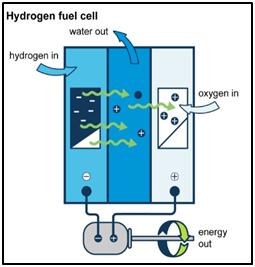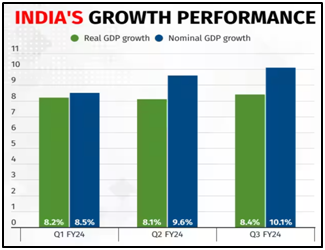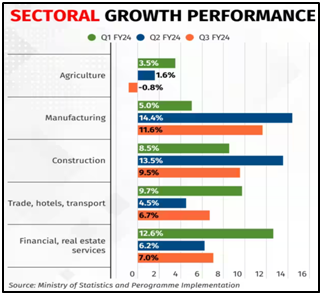Editorials & Articles – 1 March 2024
Editorials & Articles – 1 March 2024
E-evidence, new criminal law, its implementation

| Topic: GS2 – Indian Polity – Parliament – Functioning The article is crucial for UPSC aspirants, providing insights into upcoming changes in Indian criminal laws, especially pertaining to electronic evidence. |
| Context |
| ● The article discusses the impending enactment of three new criminal laws in India, focusing on changes in electronic evidence provisions and potential challenges in adapting to the revamped legal framework. |
Enactment Details:
- Three new criminal laws, Bharatiya Nyay Sanhita, Bharatiya Nagarik Suraksha Sanhita, and Bharatiya Sakshya Adhiniyam, to be effective from July 1, 2024.
- Implementation excludes Section 106(2) of Bharatiya Nyay Sanhita, prescribing 10 years imprisonment for unreported fatal accidents.
Preparation for Transition:
- Ministry of Home Affairs (MHA) and State governments gearing up for a seamless transition.
- Amendments in Bharatiya Nagarik Suraksha Sanhita related to investigation and police functions.
- Minor changes and new offenses introduced in Bharatiya Nyay Sanhita.
Electronic Evidence and Bharatiya Sakshya Adhiniyam:
- Limited changes in the Indian Evidence Act, 1872, under Bharatiya Sakshya Adhiniyam.
- Definitions section provides clarity on electronic and digital records, including emails, server logs, and messages.
- Enhanced provisions for primary (electronic) evidence and admissibility of electronic records.
Clarity on Definitions:
- The laws precisely define “document” to include various forms of electronic records.
- Illustrations under the definition highlight examples such as server logs, emails, and locational evidence.
Key Changes in Electronic Evidence Laws:
- Clearer definitions for primary electronic evidence.
- Introduction of terms like ‘semi-conductor memory’ and ‘communication device’ in Section 63 for better visibility.
- Section 63 deals with the admissibility of electronic records.
Legal Clarity on Electronic Record Admissibility:
- Law settled on the admissibility of electronic records based on the Supreme Court judgment.
- Certificate under Section 65-B(4) (now Section 63(4) of BSA) is crucial for electronic record admissibility.
- Section 65-B and Section 63 considered a complete code by themselves.
Certificate Requirements:
- Section 63(4) mandates a certificate signed by two persons, one in charge of the device and an expert.
- Standard format of the certificate prescribed in the Schedule to the BSA.
- Expert certification increases workload for cyber laboratories.
Impact on Cyber Laboratories:
- Increased workload for cyber laboratories due to expert certifications.
- Potential strain on cyberlabs lacking sufficient manpower and infrastructure.
- Expert opinion necessary when integrity of electronic record is disputed during trial.
Concerns and Recommendations:
- Increased workload necessitates a general awareness drive on encryption modes and methods.
- Private agencies using electronic devices for security purposes urged to be informed about encryption.
- Enforcement agencies need to prepare infrastructure for added responsibilities before the implementation date.
Understanding the world of the informal waste picker

| Topic: GS2 – Social Justice – Vulnerable sections Crucial for UPSC: Examines challenges faced by informal waste pickers, EPR implications, and the need for sustainable plastic management. |
| Context |
| ● The article underscores the necessity of recognizing informal waste pickers, addressing challenges in Extended Producer Responsibility, and emphasizing a just transition in the upcoming Plastic Treaty to ensure sustainable waste management. |
Background:
- March 1, International Waste Pickers Day, commemorates pickers murdered in Colombia in 1992.
- Informal waste pickers form a vital but often overlooked part of waste management globally and in India.
Informal Sector in Waste Management:
- Defined by the International Labour Organization as unregistered individuals or small enterprises in waste management.
- Primary collectors of recyclable waste, contributing significantly to resource efficiency.
- Face marginalization, lack of recognition, representation, and exclusion from social security and legal frameworks.
Data on Informal Waste Pickers:
- Global estimates indicate the informal waste economy employs 0.5%–2% of the urban population.
- In India, approximately 1.5 million waste pickers in the urban workforce, with half a million being women.
- Engage in hazardous work without safety equipment, facing health issues, irregular work, low income, and harassment.
Challenges Faced:
- Subordinate position in the caste hierarchy compounds issues.
- Private sector participation in waste management alienates them, exacerbating vulnerability.
- Private actors’ use of expensive machinery marginalizes informal pickers, pushing them into hazardous waste picking.
Extended Producer Responsibility (EPR):
- EPR gains traction in India for plastic waste management, holding commercial waste producers accountable.
- In practice, EPR redirects waste away from the informal sector, potentially displacing informal waste pickers.
- EPR Guidelines in India lack clarity on the inclusion of waste pickers and their representing organizations.
Global Role of Waste Pickers:
- Globally, waste pickers collect up to 60% of all plastic, crucial for sustainable recycling.
- Informal waste pickers collected 27 million metric tonnes of plastic waste in 2016, preventing environmental damage.
- The plastic treaty must ensure a just transition for waste pickers.
India’s Plastic Waste Challenge:
- India’s per capita plastic waste generation is rising; plastic overshoot day is January 6.
- EPR mechanism involves large recycling units, excluding the informal workforce responsible for waste transformation.
- Waste pickers possess traditional knowledge that could strengthen EPR implementation.
Conclusion:
- There is a need to rethink EPR formulation to integrate informal waste pickers into the legal framework.
- Acknowledging traditional knowledge and expertise of waste pickers in waste management is necessary.
| Waste Management in India – And Informal Sector |
Waste Management Challenges in India
The Informal Sector: Backbone of Waste Management
Challenges for the Informal Sector
Opportunities for Improvement
|
How to Reduce Cheating

| Topic: GS2 – Social Justice – Education
GS2 – Governance – Government policies This topic is relevant for both Prelims and Mains as this analysis highlights the impact of examination malpractices on millions of aspirants and the need for fair and inclusive examination systems. It touches upon the socioeconomic implications of cheating and the importance of ensuring equitable opportunities for all stakeholders. |
| Context: |
|
The Limited Impact of Increased Punishments:
- While the government’s intent to curb cheating is evident, the effectiveness of heightened punishments remains questionable.
- Despite existing legislation criminalizing cheating in several states, convictions have been scarce, indicating a failure in implementation.
- The futility of solely relying on punitive measures raises doubts about their deterrent effect on potential cheaters.
Attributes of a Good Examination System:
- A reliable examination system should exhibit qualities such as reliability, validity, objectivity, clarity, and comprehensiveness.
- However, the current processes, including question paper setting, maintenance of secrecy, exam organization, and evaluation, often fall short due to compromises by exam-conducting authorities.
- Addressing these shortcomings requires the integration of advanced IT systems to ensure transparency and accountability at every stage of examination administration.
The Role of the National Testing Agency (NTA):
- Recognizing the need for a professional examination conducting body, the establishment of the NTA marks a crucial step towards enhancing the scientific rigor and professionalism of exam administration.
- Nevertheless, this initiative represents only the initial phase of a long-term endeavor requiring sustained efforts to achieve desired outcomes.
Challenges in Examination Administration:
- The transition to online examinations was envisaged as a solution to mitigate the risks associated with traditional paper-based exams.
- However, this shift has introduced new challenges, particularly concerning the outsourcing of exam conduct to untested service providers.
- The lack of expertise within government machinery to evaluate the robustness of IT systems exposes the examination framework to vulnerabilities exploited by hackers and cybercriminals.
Exploring Alternatives to High-Stakes Examinations:
- The persistent allure of government jobs has elevated the stakes of examinations, rendering them susceptible to various forms of malpractice.
- To mitigate this risk, the emphasis should shift from treating exams as sole determinants of selection to viewing them as qualifying assessments.
- Drawing inspiration from alternative models, such as admissions processes in foreign universities, where exam scores are only one of many criteria, offers a pathway to innovation and resilience against cheating.
The Imperative for Specialized Investigation:
- Given the pervasive impact of organized cheating on millions of lives, the establishment of a dedicated investigation agency equipped to address examination offenses emerges as a necessity.
- Such an entity would expedite the process of identifying and prosecuting culprits, reinforcing the importance of integrity in examination systems.
Conclusion:
- In the pursuit of fair and reliable examinations, reliance on punitive measures alone proves inadequate.
- Instead, a multifaceted approach encompassing robust technological infrastructure, innovative assessment methodologies, and specialized investigative mechanisms is imperative.
- By prioritizing the development of foolproof systems and fostering a culture of integrity, the quest for examination integrity can be advanced, ensuring equitable opportunities for all stakeholders.
| What are the Concerns Related to the Bill? |
Discretion of State Governments:
Exploitable Loopholes in Sanctions:
Lack of Clarity on National Technical Committee:
Potential for Legal Challenges:
|
Chipping away at the Bench

| Topic: GS2 – Polity – Judiciary
This topic is relevant for both Prelims and Mains in the context of understanding the challenges faced by the judiciary in upholding its independence and integrity. |
| Context: |
|
Politicisation and Victimhood: Undermining Judicial Role:
- The judiciary’s role as the guardian of the Constitution and the ultimate arbiter of justice faces challenges from a disturbing trend of politicisation and playing the victim card.
- Selective outrage, manipulation of public sentiment, and attacks on the judiciary’s independence have become alarmingly frequent, eroding public trust and confidence in the institution’s integrity.
Instances of Preferential Treatment and Anomalies:
- Examples such as Teesta Setalvad’s immediate hearing and Gautam Navlakha’s unprecedented “home custody” arrangement under judicial directive raise concerns about preferential treatment.
- These incidents highlight a broader pattern where the judiciary’s actions are perceived as favoring specific litigants, fueling narratives of bias and political manipulation.
Judiciary’s Role in Politically Sensitive Matters:
- While the judiciary’s interventions in politically sensitive matters like the electoral bonds scheme and Chandigarh mayoral elections demonstrate its commitment to upholding democratic values, they also become fodder for those seeking to politicize its actions.
- Individuals benefiting from the judiciary’s prompt interventions paradoxically engage in maligning the institution post-relief, undermining its authority and independence.
Retired Judges’ Criticism Exacerbating the Issue:
- Criticism and interference from retired judges further exacerbate the issue, as they lend credence to narratives of institutional bias.
- Instead of upholding the dignity of their former positions, some retired judges choose to critique the current judiciary based on personal biases, undermining public confidence in the institution’s impartiality.
Threat to Judicial Independence and Democracy:
- The concerted effort to malign the judiciary under the guise of advocacy or activism poses a grave threat to the institution and the fabric of Indian democracy.
- If unchecked, this dangerous precedent could erode the judiciary’s independence, making it susceptible to manipulation by vested interests, particularly in politically sensitive cases.
Defending Judicial Autonomy and Integrity:
- In the face of baseless accusations and attempts to politicize its proceedings, the judiciary must defend its autonomy and integrity vigorously.
- It must navigate a delicate balance between intervention in matters of public importance and maintaining independence from political pressures to uphold the principles of justice and democracy.
Societal Responsibility and Upholding Democracy:
- As a society, it is imperative to recognize the critical importance of a strong, independent judiciary in safeguarding democratic principles and constitutional rights.
- Standing against attempts to undermine the judiciary through baseless allegations and undue pressure is crucial for preserving the integrity of the institution and upholding the foundations of democracy.
- Emphasizing positive engagement rather than resorting to divisive tactics is essential for maintaining public trust in the judiciary and the democratic process.
| Constitutional Provisions/Articles Related to Independent Judiciary in India |
|
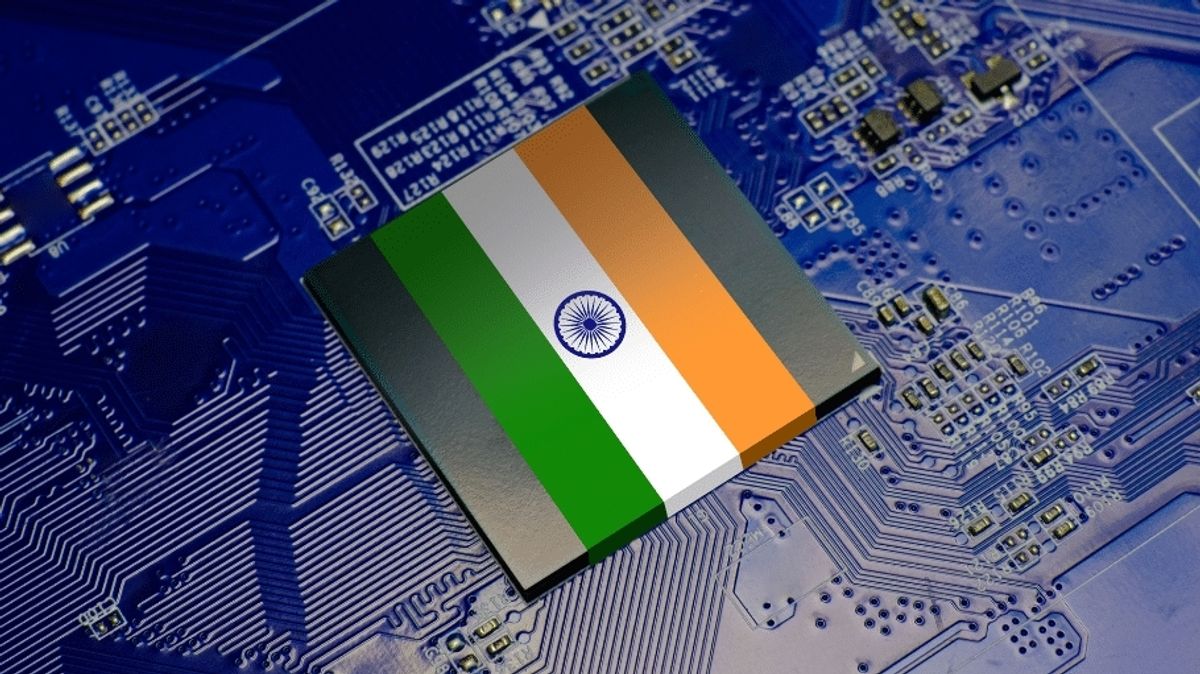
Why in News?
- The Indian government has taken a significant step toward becoming self-reliant in semiconductor production by approving the establishment of 3 semiconductor fabrication units.
- The approvals involve an investment of Rs 1.26 lakh crore ($15.2 billion) including Rs 76,000 crore support under the ‘Development of Semiconductors and Display Manufacturing Ecosystem‘ programme.
What’s in Today’s Article?
- About the Announcements of the Indian Government
- Significance of the Move
- Challenges for India to Become a Global Semiconductor Manufacturing Hub
- Steps Taken by India
- Way Ahead for India
About the Announcements of the Indian Government:
- A semiconductor fab in Dholera, Gujarat: This will be established by Tata Electronics in collaboration with Taiwan’s Powerchip Semiconductor Manufacturing Corp.
- The facility is projected to produce 50,000 wafers per month and will require an investment of Rs 91,000 crore.
- It will specialise in producing high-performance computer chips using 28 nm technology that will find applications in EVs, telecom, defence, etc.
- A semiconductor unit in Morigaon, Assam: This will be set up by the Tata Semiconductor Assembly and Test Pvt Ltd (TSAT), with an investment of Rs 27,000 crore.
- This is poised to churn out an impressive 48 million chips per day, catering to the automotive and electric vehicle sectors.
- A semiconductor unit in Sanand, Gujarat: This will be established by CG Power, in conjunction with Japan’s Renesas Electronics Corp and Stars Microelectronics of Thailand, with an investment of Rs 7,600 crore.
- The construction of these plants will commence within the next 100 days.
Significance of the Move:
- Semiconductors (essential for defence, automobiles and telecommunications sectors) have grown into a key geopolitical battleground, with the US, Japan and China investing heavily in developing domestic capabilities.
- As global demand for semiconductors surges, India’s initiative to build domestic chip-making capabilities signifies a major leap towards –
- Technological autonomy and
- Reduced import dependency, particularly from manufacturing giants like Taiwan.
- These developments are part of India’s broader vision to position India as a global hub for semiconductor manufacturing.
- The initiative is expected to bolster India’s semiconductor market, projected to reach $63 billion by 2026.
- With these units, the semiconductor ecosystem will get established in India and advanced packaging technologies will be indigenously developed in India.
- Finally, the establishment of these units is anticipated to create ~20,000 direct advanced technology jobs and around 60,000 indirect jobs and will catalyse growth in related sectors.
Challenges for India:
- India’s chip incentive plans are focused on boosting all three aspects (ATMP facilities; OSAT plants; and Full-scale foundries) of the semiconductor ecosystem.
- However, India’s close allies (US, EU) have rolled out more lucrative incentive schemes than New Delhi.
- The country is focusing on older nodes like 28 nm. TSMC, the most influential and important chip company in the world today, which counts Apple as a customer, is currently making chips with a node size of 3 nm.
- The other issue is the talent pool. While India is the biggest back office for design engineers of all major chip companies, skilled talent that can work on factory floors of a fabrication plant is still hard to come by.
- India also currently lacks in original research in semiconductor design, where the future of the chip is decided.
Steps Taken by India:
- The Indian government is aware of these shortcomings and is in the process of setting up a R&D lab at Semiconductor Laboratory (SCL) in Mohali.
- It is working on a Rs 10,000 crore modernisation plan for the organisation, and a large chunk of that will go towards setting up the Bharat Semiconductor Research Centre.
- Here, a majority of the research will focus on developing chips that can address India’s unique needs and demands.
- In 2021, the government had rolled out a Rs 76,000 crore chip incentive scheme, under which the Centre offered half the amount of a plant’s capital expenditure costs as subsidy.
- There are schemes like the production linked incentive (PLI) plan for smartphone and laptop manufacturing, where the government is offering a subsidy to companies on the basis of their sales bills.
Way Ahead for India:
- The government’s commitment, coupled with significant private sector investments, underscores the strategic importance of developing indigenous capabilities in semiconductor fabrication and assembly.
- As construction progresses and operational capabilities develop, India will attract more global players, mirroring the success seen in its smartphone assembly industry.
- These initiatives represent a milestone in India’s journey towards technological self-sufficiency and positions the country as a potential leader in the global semiconductor market.

Why in news?
- Prime Minister Narendra Modi on Wednesday virtually launched India’s first indigenously developed hydrogen fuel cell ferry.
- The vessel, manufactured by Cochin Shipyard Limited (CSL), will be deployed for service at Varanasi in Uttar Pradesh.
- The hydrogen fuel cell system was developed by KPIT Technologies, Pune, in collaboration with the Council of Scientific and Industrial Research Labs, under the Union Ministry of Science and Technology.
What’s in today’s article?
- Harit Nauka initiative
- Hydrogen fuel cells
- News Summary
Harit Nauka (green boat) initiative
- This is the initiative of the Ministry of Ports, Shipping and Waterways. It envisages a green transition of inland vessels.
- In January 2024, the shipping ministry unveiled the Harit Nauka guidelines for inland vessels.
- As per the guidelines, all states have to make efforts to use green fuels for 50 per cent of inland waterways-based passenger fleets in the next one decade, and 100 per cent by 2045.
- This is to reduce greenhouse gas emissions as per the Maritime Amrit Kaal Vision 2047.
- In line with this, the ferry can be replicated in other parts of the country for urban mobility. It is also a boost to the National Green Hydrogen Mission.
Hydrogen fuel cells
- About
- A hydrogen fuel cell uses the chemical energy of hydrogen to produce electricity.
- It is a clean form of energy with electricity, heat and water being the only products and by-products.
- Working
- Fuel cells work like batteries, but they do not run down or need recharging. They produce electricity and heat as long as fuel is supplied.
- A fuel cell consists of two electrodes—a negative electrode (or anode) and a positive electrode (or cathode)—sandwiched around an electrolyte.
- A fuel, hydrogen in this case, is fed to the anode, and air is fed to the cathode.
- A catalyst at the anode separates hydrogen molecules into protons and electrons, which take different paths to the cathode.
- The electrons go through an external circuit, creating a flow of electricity.
- The protons migrate through the electrolyte to the cathode, where they unite with oxygen and the electrons to produce water and heat.
- Limitations in India
- High Cost:
- Fuel cell systems are still relatively expensive compared to traditional energy sources.
- Lack of Infrastructure:
- India currently lacks the infrastructure needed to support the widespread adoption of fuel cell technology, including hydrogen production and distribution networks.
- Technical Challenges:
- Fuel cell technology is still in its early stages of development, and there are ongoing technical challenges.
- Policy Limitations:
- The Indian government has yet to put in place a comprehensive policy framework to support the development and adoption of fuel cell technology.
- This has limited the growth of the industry and hindered investment in research and development.
- High Cost:
- Steps taken by India
- The National Green Hydrogen Policy has been developed to outline a vision for the growth of the hydrogen and fuel cell industry in India.
- The aim of the National Green Hydrogen Policy is to make India the Global Hub for production, usage and export of Green Hydrogen and its derivatives.
- The National Green Hydrogen Policy has been developed to outline a vision for the growth of the hydrogen and fuel cell industry in India.
News Summary: PM Modi launches hydrogen-powered ferry
- PM Modi virtually launched India’s first indigenously developed hydrogen fuel cell ferry.
- The Ministry of Ports, Shipping and Waterways met 75 per cent of the project cost.
Features of the ferry
- Length and carrying capacity
- The Hydrogen fuel cell vessel is a 24-meter-long catamaran, which can carry 50 people in its air-conditioned passenger area.
- Does not use conventional batteries
- Hydrogen fuel cell vessels do not use conventional batteries as the primary storage house of electrical energy.
- The vessels run on hydrogen fuel, which is stored in cylinders.
- This boat has five hydrogen cylinders that can carry 40kg of hydrogen and support eight hours of operations.
- The vessel is also fitted with a 3-kW solar panel.
- Type of cells used in the vessel
- This vessel uses a 50-kW PEM (proton-exchange membrane) fuel cell, with Lithium-Ion Phosphate batteries.
- The advantage is that the cells can quickly change their output depending upon the power demand.
- PEM fuel cells are popular in automotive applications because they operate at a lower temperature, and are lighter and more compact.
- This vessel uses a 50-kW PEM (proton-exchange membrane) fuel cell, with Lithium-Ion Phosphate batteries.
- Environment friendly
- The hydrogen fuel cell-powered vessel has zero emission, zero noise and is energy-efficient, which makes it more environment-friendly.
- Since there are no moving parts, the ferry requires less maintenance than combustion vessels.
- Other benefits
- While hydrogen fuel cell technology has been under development for maritime applications, only a few countries globally have done demonstration projects.
- This ferry, thus, has given India an early mover advantage to tap the potential of hydrogen as an emerging green fuel in the marine sector.
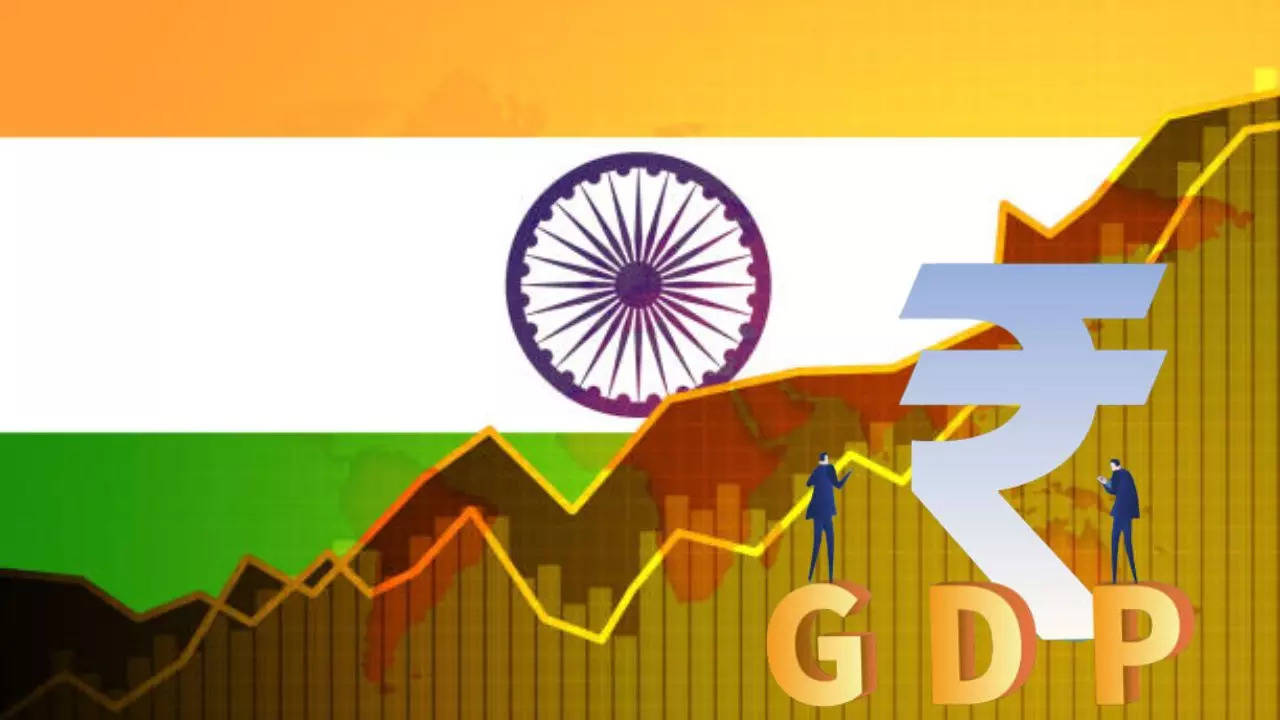
What’s in Today’s Article?
- Background (Context, NSO)
- Key Highlights of the Latest Data (Overall Data, Sector-wise, etc.)
- Key Words for Prelims (GDP, GVA, etc.)
Background:
- India’s Gross Domestic Product (GDP) growth surged to a six-quarter high of 8.4% in October-December period of 2023.
- This has pushed up the growth rate for 2023-24 to 7.6% as against the earlier estimate of 7.3%, data for third quarter GDP and second advance estimates for 2023-24 released by the National Statistical Office showed.
About National Statistical Office (NSO):
- In May 2019, the Central Government merged the National Sample Survey Office (NSSO) and the Central Statistics Office (CSO) under the Ministry of Statistics and Programme Implementation (MoSPI).
- The merger created an overarching body i.e., National Statistical Office.
- Hence, the statistical wing of the MoSPI is now called the NSO.
- NSO acts as the nodal agency for planned development of the statistical system in the country.
- It lays down and maintains norms and standards in the field of statistics, involving concepts and definitions, methodology of data collection, processing of data and dissemination of results.
Key Highlights of the Data Released by the NSO:
- The estimate for growth in the second quarter has now been revised up to 8.1 percent, while that for the first quarter has been revised higher to 8.2 percent from 7.8 percent.
- At 8.4 percent, the latest quarterly GDP growth rate is the highest in six quarters.
- Last time India’s economy grew at a faster rate was in the first quarter of 2022-23, when it grew by 13.1 percent, now revised down to 12.8 percent.
- The Reserve Bank of India’s projection for growth in Q3 was pegged at 6.5%.
- In the third quarter of the current financial year, among sectors, manufacturing posted the highest growth rate in double digits at 11.6%, while the construction sector grew 9.5%.
- Agriculture recorded a contraction of 0.8% in October-December.
- Private final consumption expenditure, an indicator of consumption demand, rose by 3.5% year-on-year in October-December.
- On the other hand, government final consumption expenditure decreased by 3.2%.
- Gross fixed capital formation, an indicator of investment, grew by 10.6% during the third quarter.
Key Words:
- What is GDP?
- The total monetary or market value of all finished goods and services produced within a country’s borders within a specific period of time is called its gross domestic product (GDP).
- It is a comprehensive measure of the country’s economic health, expressed in terms of the overall domestic production and functions.
- The GDP of a country includes all private and public consumption, government outlays, investments, additions to private inventories, paid-in construction costs, and foreign balance of trade.
- What is GVA?
- In situations where the GDP fails to measure the real economic scenario, the Gross Value Added (GVA) is a better gauge.
- The GVA measures the total value of goods and services produced in an economy, and the amount of value added to a product.
- It is defined as the output produced after the deduction of the intermediate value of consumption. The GVA, in India, is measured at ‘basic prices’.
- How are GDP and GVA Related?
- GDP and GVA are related as follows:
- GDP = GVA + Taxes levied by governments on products – Subsidies provided by government on products
- Typically, the absolute level of GDP is more than the absolute level of GVA because taxes received are more than subsidies spent by the government.
- GDP and GVA are related as follows:
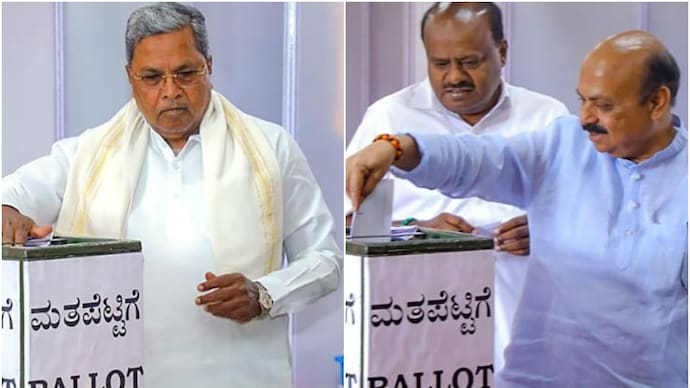
Why in news?
- The Rajya Sabha elections in the States of Uttar Pradesh, Himachal Pradesh and Karnataka witnessed cross-voting by MLAs belonging to different parties.
- This has once again raised concerns about the sanctity of the election process.
What’s in today’s article?
- Rajya Sabha elections
- Tenth Schedule and Rajya Sabha election
- Supreme Court and 10th Schedule
Rajya Sabha elections
- Constitutional provision
- As per Article 80 of the Constitution, representatives of each State to the Rajya Sabha are elected indirectly by the elected members of their Legislative Assembly.
- The polls for Rajya Sabha will be required only if the number of candidates exceed the number of vacancies.
- In fact, till 1998, the outcome of Rajya Sabha elections were usually a foregone conclusion.
- The candidates nominated by various parties, according to their strength in the Assembly, used to be elected unopposed.
- Legal Provision
- The June 1998 Rajya Sabha elections in Maharashtra witnessed cross-voting.
- Hence, in order to rein in the MLAs from such cross-voting, an amendment to the Representation of the People Act, 1951 was carried out in 2003.
- Section 59 of the Act was amended to provide that the voting in elections to Rajya Sabha shall be through an open ballot.
- The MLAs of political parties are required to show their ballot paper to the authorised agent of their Party.
- Not showing the ballot paper to the authorised agent or showing it to anyone else will disqualify the vote.
- Independent MLAs are barred from showing their ballots to anyone.
Tenth Schedule and Rajya Sabha elections
- The 52ndconstitutional amendment introduced the anti-defection law through the Tenth Schedule in 1985.
- This Schedule provides that a member of a House of Parliament or State legislature who voluntarily gives up the membership of their political party or votes against the instructions of their party in a House are liable for disqualification from such House.
- This instruction with respect to voting is issued by the whip of a party.
- However, the elections to Rajya Sabha are not treated as a proceeding within the Legislative Assembly.
- The Election Commission, drawing reference to Supreme Court judgments, had issued a clarification in July 2017.
- It specified that the provisions of the 10thSchedule, with respect to voting against the instruction of the party, will not be applicable for a Rajya Sabha election.
- Furthermore, political parties cannot issue any whip to its members for such elections.
Supreme Court and 10th Schedule
- Kuldip Nayar versus Union of India (2006)
- The Supreme Court in Kuldip Nayar versus Union of India (2006), upheld the system of open ballot for Rajya Sabha elections.
- It reasoned that if secrecy becomes a source for corruption, then transparency has the capacity to remove it.
- The same court held that an elected MLA of a political party would not face disqualification under the Tenth Schedule for voting against their party candidate.
- He/she may at the most attract disciplinary action from their political party.
- Ravi S. Naik and Sanjay Bandekar versus Union of India (1994)
- In this judgement, the apex court held that that voluntarily giving up membership under the Tenth Schedule is not synonymous with only formally resigning from the party to which the member belongs.
- The conduct of a member both inside and outside the house can be looked into to infer if it qualifies as voluntarily giving up membership.
Way forward
- In India, we follow a two-fold principle. When it comes to voting in direct elections where the entire population is involved, we insist on a secret ballot.
- But in legislative chambers, where Bills are to be voted on, we do not insist on secrecy. The voting is open.
- The Rajya Sabha election fell halfway between the two kinds of votes. It elected MPs but the electoral college was not based on universal franchise: only MLAs could vote.
- It was decided that voting for Rajya Sabha candidates had more in common with voting on Bills than with general elections. So, the secret ballot was abolished and voting became public.
- Instances of cross-voting have undermined the higher principle of free and fair elections and their purity.
- Therefore, the court must reconsider its stance on whether cross-voting in such elections can be a valid ground for disqualification under the Tenth Schedule.
- Only then will the intent behind implementing the open ballot system be fully realized.
